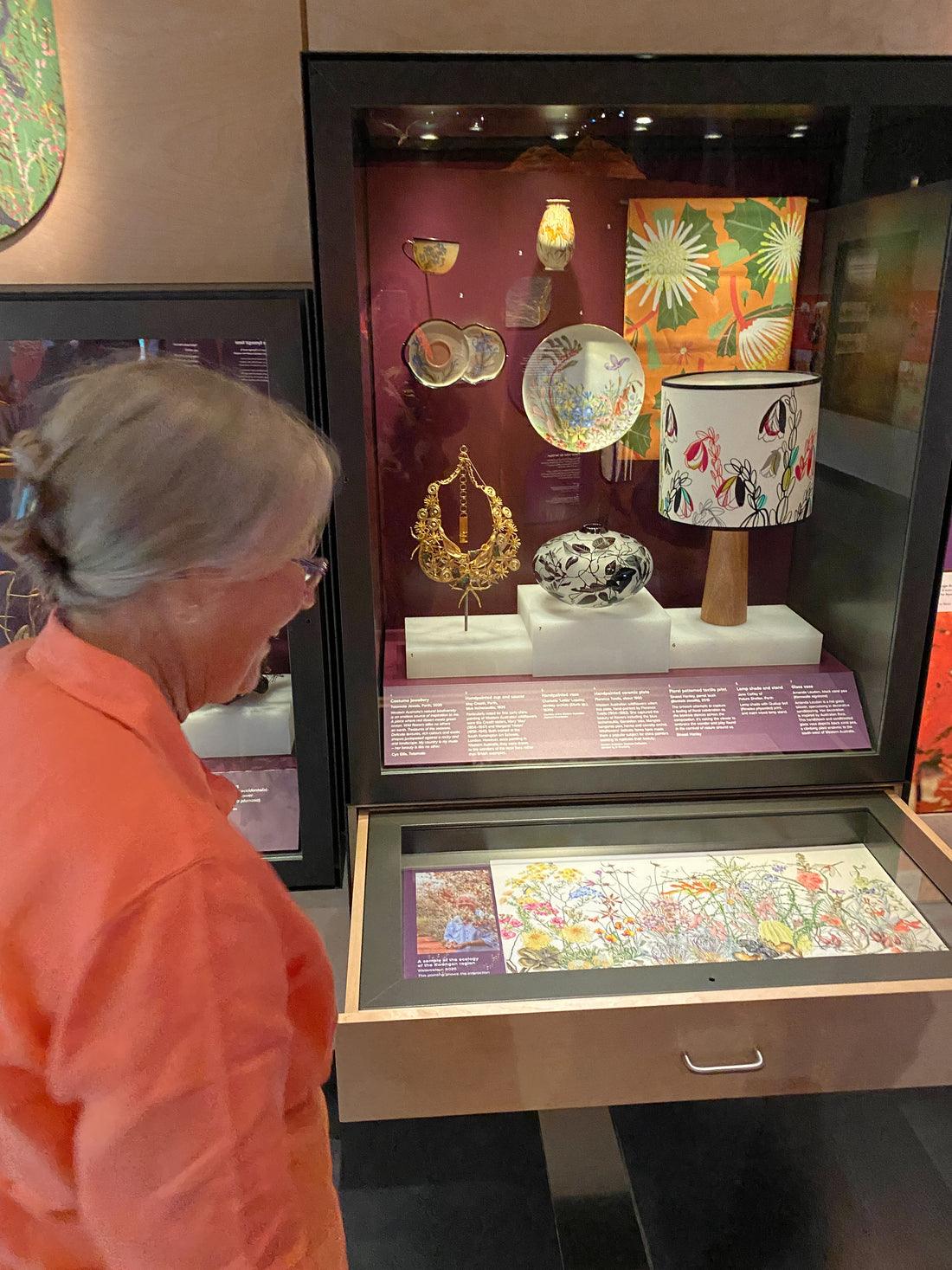In April 2019, Philippa was approached by the WA Museum to see if she was interested in creating a watercolour painting of ‘WA wildflowers, particularly from Kwongan habitats’ for the new museum. Of course she was, and finally, today, many, many months later, the new WA Museum Boola Bardip is open.
Kwongan, or kwongkan comes from the Bibbulmun Noongar word for sand plain, and is now used by botanists and ecologists to describe this specific community of vegetation.
Head up to level 3 and walk inside the Wild Life exhibition to find Philippa’s exquisite painting of a sample of little plants, animal and insect life that exists in the ‘Kwongan’ region.
You can also find a plethora of studio Nikulinsky items in the new WA Museum shop.
If you are interested in a fine art reproduction of this painting please get in touch.
Further reading about the Kwongan
Plant Life on the Sandplains in Southwest Australia: A global biodiversity hotspot Edited by Hans Lambers, published by UWAP



